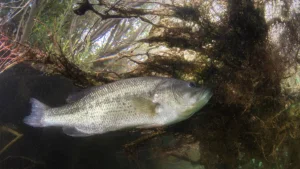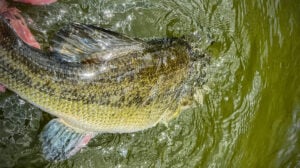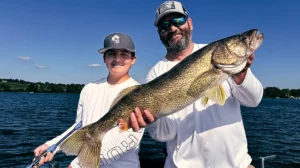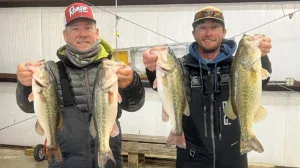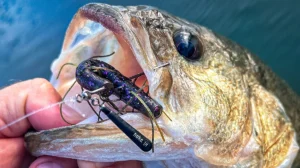As an avid power fisherman, my ego gets the better of me at times and I think I know it all. I’ve been doing this for quite a while now and us men in general are a little predispositioned to unwarranted arrogance.
Don’t misunderstand me; there’s at least a dozen finesse tactics that I make zero claim to being an expert at. But throwing a spinnerbait in shallow, muddy water… that’s my deal.
So I was more than a little surprised when my good buddy and Bassmaster Opens pro Tom Frink showed me his new favorite spinnerbait. It’s a monstrosity of a lure with a bulky, beat-up red head and an oversized blade on it.
Knowing Frink like I do and having more than enough confidence in his fishing prowess, I swallowed my pride and picked his brain. Here’s what I learned.
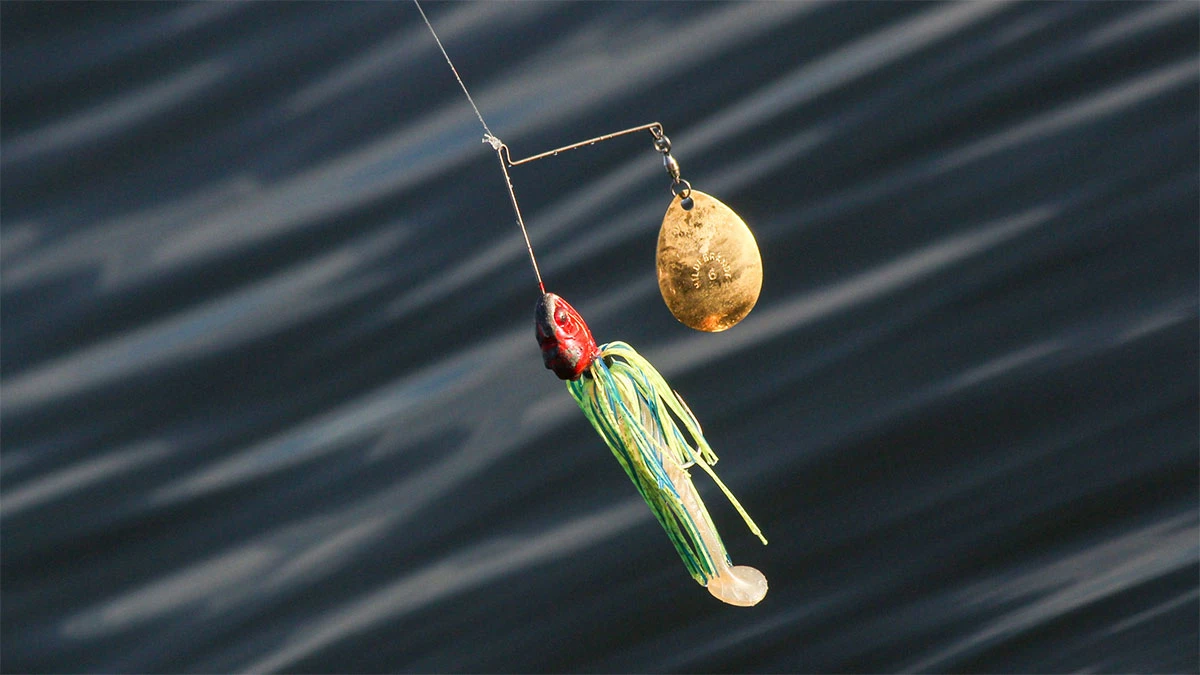
Fishing a spinnerbait in shallow, muddy water
Let’s first introduce the basic idea. The thump of a big spinnerbait blade gives off a lot of vibration, making it a great selection for targeting bass that live in shallow, muddy and often times cold water.
“The spinnerbait with a big blade is usually a dirty water deal for me,” Frink said. “It doesn’t have to be red mud but I like less than a foot of visibility. If it gets too clean they don’t seem to eat it well and I go to a swim jig or a crankbait.”
When the water turns muddy, bass will often move shallow to increase their odds of finding food. They do this by setting up shop close to cover, where they can ambush prey. There’s also more light penetration in the shallow muddy water, as opposed to the deeper muddy water. Bass have to rely more heavily on their lateral lines to hunt when visibility is limited.
All of these combine to make a spinnerbait one of the more obvious choices in shallow, muddy water. But it’s the super heavy part of the the equation that threw me for a loop, as I’m sure it does some of you. So let’s get into that now.
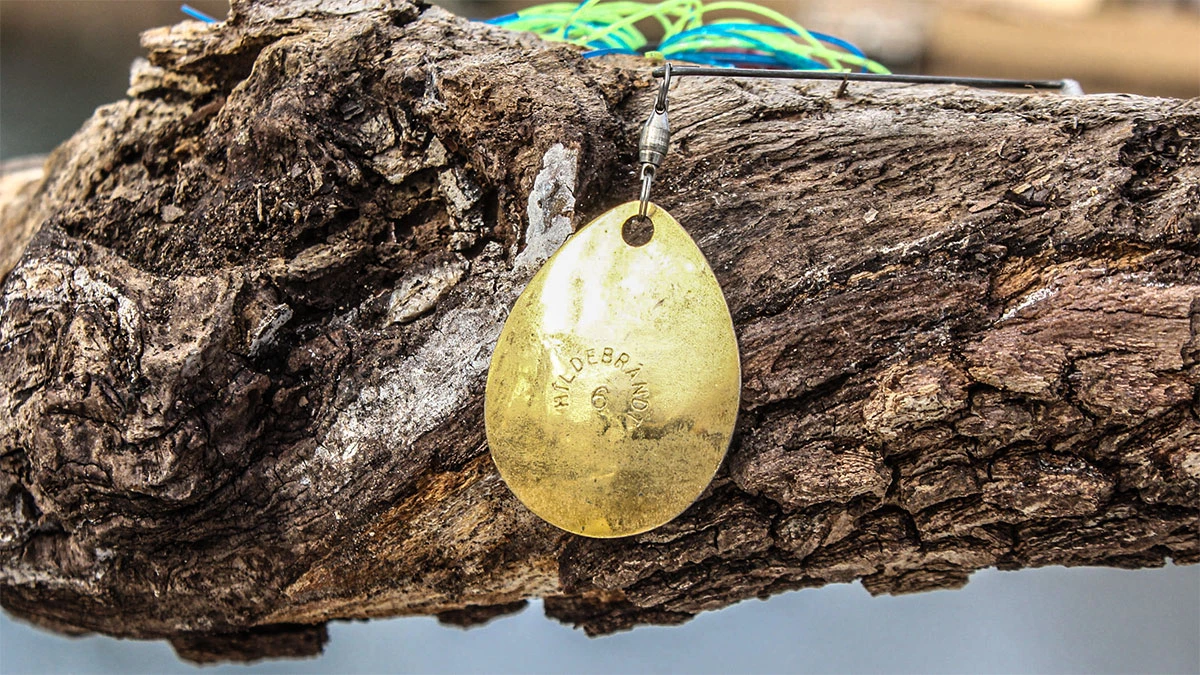
Why fish a heavier spinnerbait?
“To fish the bigger blade, you need the heavier spinnerbait or it’s going to roll on its side.”
Having fished a big blade shallow a lot in the past, it was like a lightbulb went off when Frink said this. One of my favorite spinnerbaits to throw in shallow mud has a 1/2-ounce head and a size 6 willow leaf blade… and that bait rolls over on its side and hangs cover regularly.
“Typically I’m just throwing a single Colorado blade. If I’m throwing even a size 4 1/2 blade on a 3/8-ounce head, I have to reel it so slow. Because if I speed it up, it’s going to start to roll.”
Lots of anglers like myself will throw a 3/8- or 1/2-ounce spinnerbait in shallow, muddy water. But Frink goes above and beyond this, moving into heavyweight status with the head, so he can max out the blade size.
“A 1-ounce head with a size 6 Colorado blade doesn’t roll like the 1/2-ounce with a size 6 would. That smaller combo doesn’t even really work. You’ll reel it and it just kind of turns sideways.”
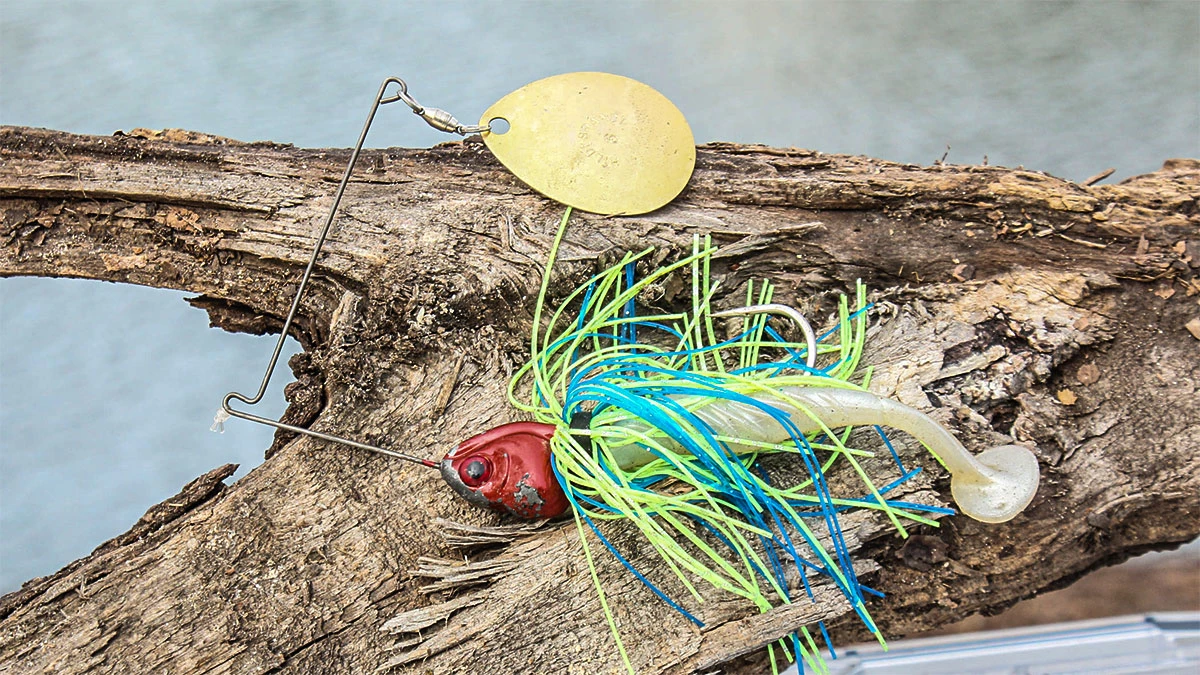
How shallow can you fish a heavy blade?
“Honestly, I’ll throw it on the bank but I’m not slow-rolling it on the bottom,” Frink said. “I’m keeping it up off the bottom. I’ll fish it a couple feet below the surface and a couple feet off the bottom.”
Fishing his spinnerbait in 1 to 5 feet of water, Frink basically tries to split the water column. This gives bass above and below his bait a good shot at it and allows him to effectively fish the whole water column with one cast. But when it’s muddy and cold, multiple casts are still necessary at times.
“A lot of times, this time of year, it’s a multiple-cast deal where you need to throw it 5, 6 or even 7 times at a target.”
This receptive presentation of the bait to high-percentage targets gives you the best chance of activating a lethargic bass. When the water is warmer, a single cast will often trigger a reaction strike. But when it’s cold, the first cast might alert the fish to something in the area, the second cast draw it in and only on the third, fourth or fifth cast will the bass actually strike at the bait.
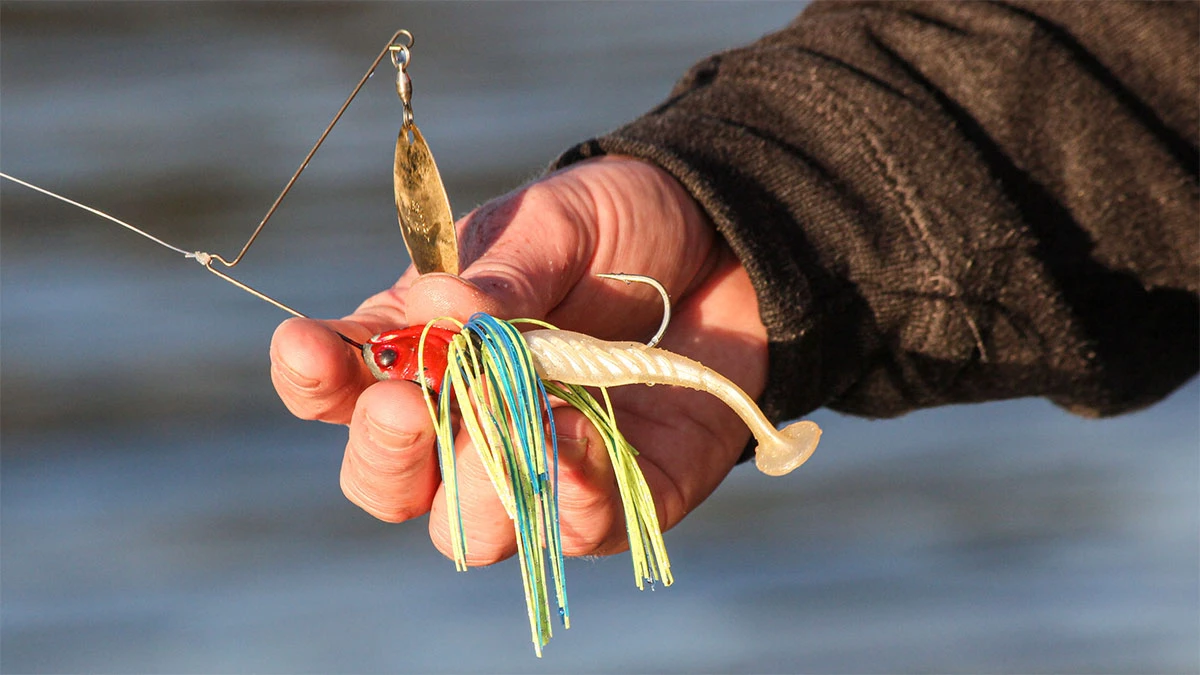
Various sizes
Frink also pointed out that this isn’t a one-size-fits-all technique. There’s a spectrum to his heavy spinnerbait selection.
“I throw a 1-ounce with a No. 6 Colorado a lot,” Frink said. “But if I notice I’m getting bit and the fish just aren’t getting it, I’ll change to a 3/4-ounce with size 5.”
This often happens when Frink is in “search mode” looking for productive areas where he can get bit. In order to cover water and rule out unproductive areas, Frink will intentionally fish a little faster with the 1-ounce, size 6 combo. But when he has a couple short-striking fish miss the bait, he’ll change up.
“Then I’ll go to the 3/4-ounce with a size 6 Colorado. That forces me to slow down. I can’t reel it as fast or it will start to roll.”
Speed isn’t the only reason Frink changes things up either. If the water starts to clear up, the aggressive thump of the size 6 blade can be a little too much for the bass and turn them off. That’s when Frink will move to a 3/4-ounce head with a size 5 blade.
“When I wanted to go out and learn this technique, I had three or four different spinnerbaits tied on. It’s something that you just kind of have to get out there and do to get a feel for it.”
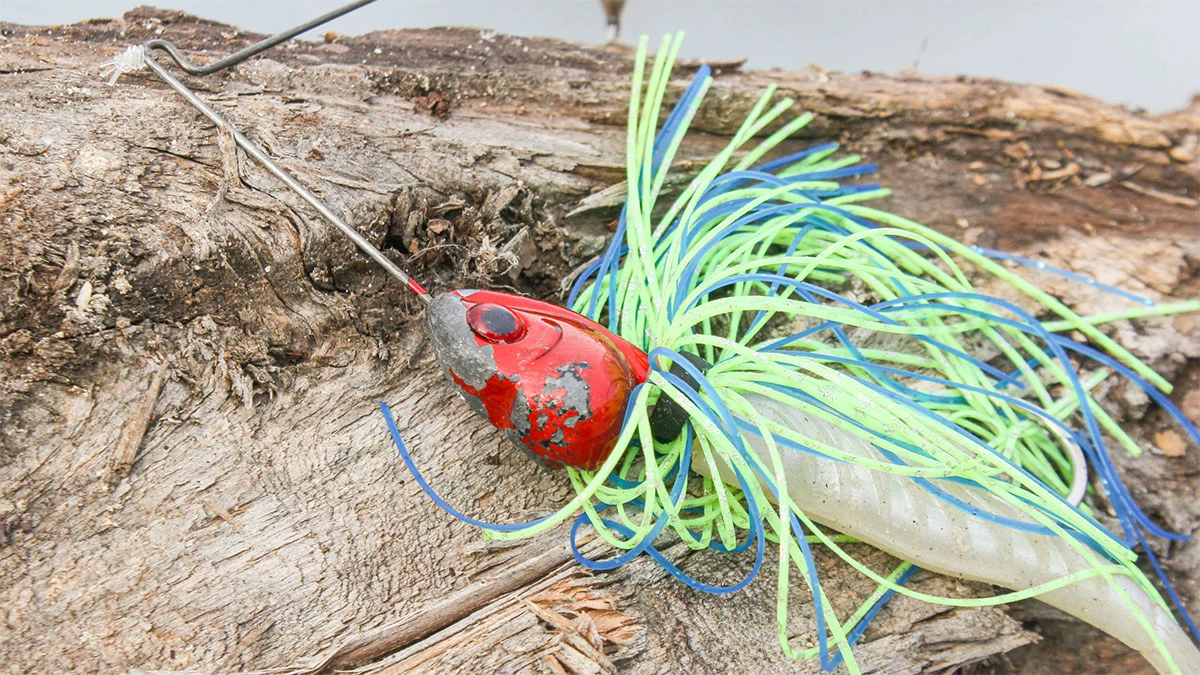
Color recommendations
The color combination of Frink’s spinnerbait is a little different as well. The chartreuse and blue skirt isn’t all that uncommon but the red head is a little unusual. Though Frink doesn’t think the fish can see the bait all that well in the muddy water anyway, he wants to stack the cards in his favor as much as possible.
“I feel like if they can see it, the red head gives them something to focus in on,” Frink said. “I’ve done it with buzzbaits, too.”
Though the red head may be more of a confidence booster than a necessity, Frink’s skirt, blade and trailer color selection are common place among baits fished in muddy water.
“Chartreuse and blue is just a bright color that you can see in dirtier water,” Frink said. “I’m not as big of a believer as some people are on color in dirty water. I think they use their lateral line more to find stuff. But if they get close enough to swipe at it, I want them to hopefully be able to see it.”
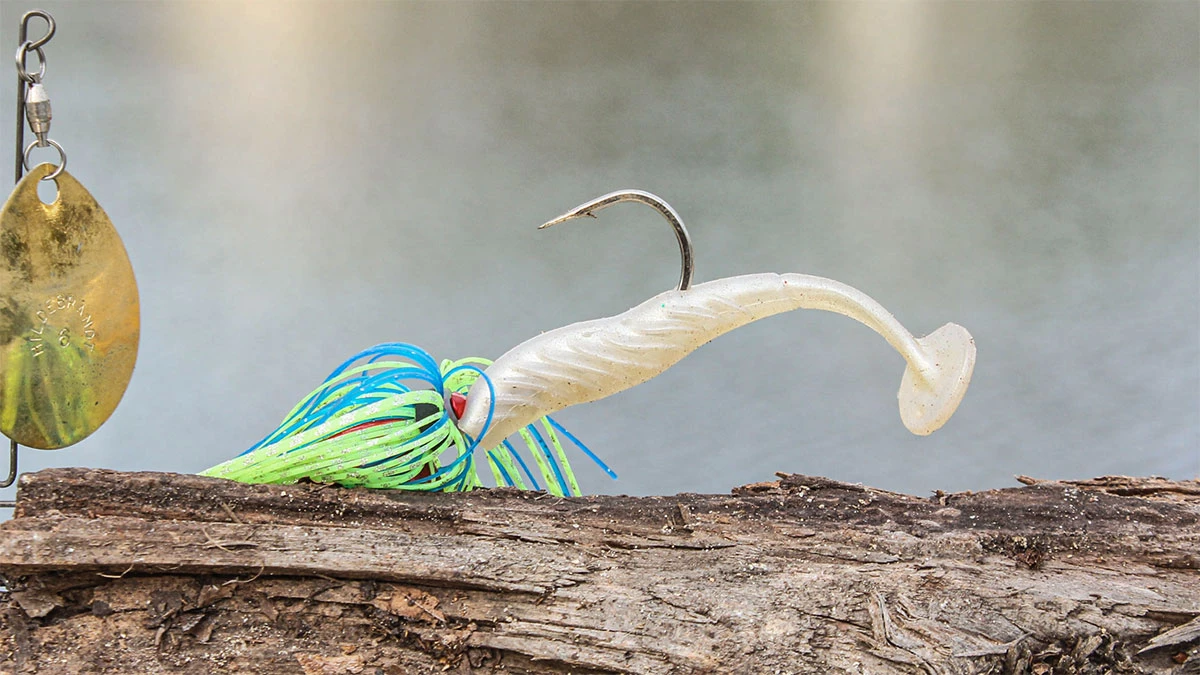
Trailer
Frink goes with a swimbait-style trailer on his heavy spinnerbaits, most of the time. The body of the swimbait bulks up the overall presentation, again making it as easy to see as possible. But he’ll change the size of his swimbait in certain situations.
“If I’m fishing really shallow and I want to kind of keep it up more, having a thicker trailer with a bigger tail helps,” Frink said. “I like that little bit of extra kick from the tail, too. If I want to get the bait a little deeper, I’ll use a smaller swimbait with a thinner tail or even drop all the way back to a curly tail worm.”
If you’re a fan of fishing shallow, muddy water, it’s a good idea to give a heavy spinnerbait with a big blade a try. Having sampled this technique a bit myself, I can attest to the part about your bait staying true and running straight more. This has led to fewer snags for sure.
Just be careful not to fish the bait too quickly. Since the bait will stay upright on a faster retrieve, there’s the tendency to fish too fast. But if you pay attention to your retrieve and gauge the aggressiveness of the fish, you can back off to a lighter head and perhaps even a slightly smaller blade, and you’ll eventually dial in the perfect heavy spinnerbait combo to fish shallow.




